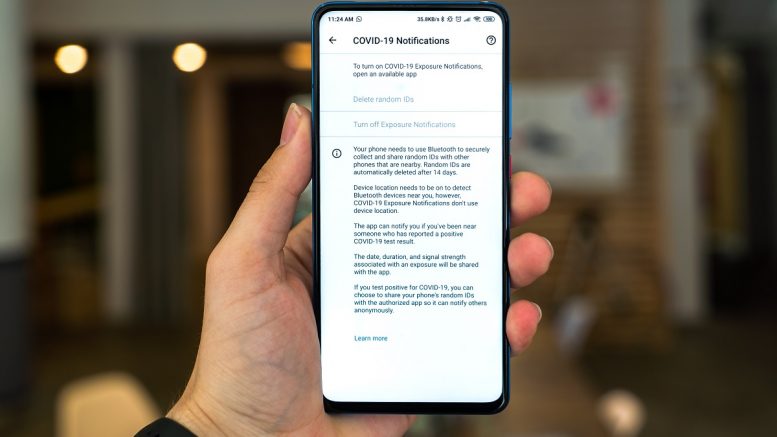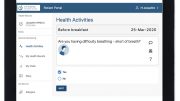The pandemic has advanced remote healthtech development and adoption at an unprecedented rate. The skepticism around remote healthcare technology withered as the worldwide Covid-19 social distancing measures took hold. Now, patients and clinicians alike have come to embrace digitized versions of previously in-person processes in a way that clearly signals that remote technology and virtual care programs are here to stay.
As early as April 2020, Michael Snyder, professor and chair of genetics at Stanford School of Medicine, predicted, “I think we have hit a turning point. Here at Stanford Medicine, we used to see 1,000 patients a week with telehealth and now we’re seeing 3,000 a day.”
Telemedicine platforms and remote monitoring solutions have allowed for numerous benefits over the past year. Patients now have access to medical care from the comfort of their homes, shared access to medical data, and ownership of that data. In turn, clinicians have witnessed an overall drive in efficiency.
Let’s dive further into how both clinicians and patients are benefiting from remote healthtech—and how tech companies and healthcare institutions further drive its adoption.
How remote healthtech is improving patient experience
Experts predict that in 2021, consumers will seek to be in the driver’s seat of their healthcare. And that means new technologies must provide excellent user and patient experience.
With telehealth innovations, patients are able to gain access to treatment much faster than when using traditional paths, and often from the comfort of their home. This has been especially vital in the age of Covid-19 where catching the virus is still a risk for many, as vaccination efforts work through sections of populations.
The app HeyDoctor offers online visits from as little as $19 and is a convenient platform if you are in need of a licensed medical professional to write you a quick prescription. The platform offers a full range of medical services, including general visits, medicine refills, and specialized treatments for conditions such as acne or eczema, as well as many more.
Amwell is another example of a telehealth platform that provides online consultations with doctors, specialists, psychiatrists and therapists, 24/7. Both of these services are covered by many private health insurance plans.
Another benefit to patients provided by telehealth platforms is the transparency they are provided when it comes to accessing personal health records. Engaging with private medical data in the digital realm grants patients an increased ownership over information that should belong to them to begin with. The shift to telehealth means patient data is no longer siloed in medical records that only clinicians can access. Armed with this knowledge, patients get to view the full picture of their health and are, in turn, more equipped to make the better medical decisions for themselves.
How clinicians benefit from telehealth innovations
With telehealth, doctors can access multiple patients from a single location, allowing them to cut out the time they’d otherwise need to spend physically travelling to their offices, or making house calls.
Remote patient monitoring solutions allow doctors to remotely keep track of patients’ vital signs without having to be physically present to conduct checks. IoT wearable devices provide real-time data to doctors who are located elsewhere, be that in another hospital room or across town at home, on things like heart rate and blood sugar levels.
Furthermore, technologies like TeleSitters provide live video and audio feeds from patients’ hospital rooms, allowing clinicians to monitor up to 57 patients at a time. Experts forecast that products like this will soon evolve to use IoT and biometric technologies to track patients’ vital signs and activity simultaneously.
Naturally, these technologies allow clinicians to store and view all of that patient data within a digital platform. This drastically reduces the amount of paperwork that needs to be filled out, as the data is already automatically recorded within the telehealth solution. It’s no secret that administrative tasks take up a huge chunk of doctors’ time on the job—time that they could be spending providing additional care. What’s more, purpose-built remote technology platforms allow clinicians to work collaboratively in real-time and share information across multi-disciplinary teams.
Healthcare chatbots (often powered by AI) are also emerging as a way to free up healthcare professionals’ time to spend on pressing, complex patient issues rather than answering straightforward questions. The chatbots can play the basic role of a physician by checking up on patient progress, collecting feedback and reminding them of upcoming appointments. Chatbots are even being used to answer FAQs and assessments related to Covid-19 symptoms (like that of Sutter Health).
Making remote healthtech a success for all
Adopting remote healthtech innovations—whether for the doctor or patient—is not as straightforward as simply downloading a solution and getting started. There are a number of factors that go into successful, continued usage of a tool which maximizes its effectiveness.
User-centered design which prioritizes accessibility is absolutely essential to support sustained and seamless usage of remote health tools. Accessible design not only allows people with diverse needs to easily interact with a digital product, it improves the user experience for everyone else using the tool too. Every healthtech product should follow accessibility guidelines, and UX design teams should ensure they test the solution on a wide array of users that encompass all possible user personas.
When it comes to easy-to-use UX, the user flow must be simple and straightforward, especially as healthcare apps need to be usable by seniors who may not be accustomed to using digital products and people from across different cultures who might be heavily dependent upon pictorial clues and a basic grasp of an adoptive language. To do this, digital products should include clear, colloquial language, step by step interface guidance, push notifications and alerts, limited distractions on the interface, easy access to support, and custom experiences. Remote healthtech products should be sure to be clear about data privacy and stress to the user that any information they enter in the app is secure and HIPAA (or equivalent) compliant.
It’s also important to remember that while technology solutions can provide new pathways to care and an improved experience, in many instances patients still require that “human touch”—technology should augment the treatment of doctors, not replace it entirely. This means, when a patient specifically requests the physical presence of a healthcare professional or a clinician is dealing with sensitive matters, technology should take a backseat.
On the hospital side, it’s vital to remember the importance of cloud adoption. Hospitals and clinics using on-premise systems will find it difficult to scale up their use of new technologies—something Covid-19 has taught us is essential given changing demands. If financially feasible, healthcare facilities should consider migrating to a cloud-based infrastructure that allows them to be flexible and prepared. Cloud-based systems will enable providers to access patient data anywhere, enabling telehealth and better care coordination.
Remote healthtech might have experienced a spike in adoption due to the pandemic, but now it’s here—it’s here to stay. Product designers must commit to user-centric, accessible design if they are to promote adoption across people from all walks of life, and healthcare establishments must create robust foundations for these new technologies to thrive and augment the care they deliver.
By Antonela Ferretti, Lead Business Analyst & Scrum Master at intive





